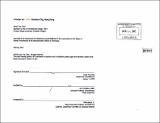| dc.contributor.advisor | Ann Pendleton-Jullian. | en_US |
| dc.contributor.author | Chan, Kwan Yue, 1979- | en_US |
| dc.contributor.other | Massachusetts Institute of Technology. Dept. of Architecture. | en_US |
| dc.coverage.spatial | a-cc-hk | en_US |
| dc.date.accessioned | 2011-08-01T14:34:45Z | |
| dc.date.available | 2011-08-01T14:34:45Z | |
| dc.date.copyright | 2005 | en_US |
| dc.date.issued | 2005 | en_US |
| dc.identifier.uri | http://hdl.handle.net/1721.1/65065 | |
| dc.description | Thesis (M. Arch.)--Massachusetts Institute of Technology, Dept. of Architecture, 2005. | en_US |
| dc.description | Includes bibliographical references (p. 73-75). | en_US |
| dc.description.abstract | Modern day living limits us from understanding and seeing where our food comes from and how it was planted, grown, and manufactured. As we become more and more conscious about our diets, our relationship to food is more distant than we've ever come to realize. The closest we get to knowing the source of our food is through reading labels from manufacturers, of nutritional facts and ingredients. The relationship between food and the consumer in an urban environment becomes highly complex and mysterious. The Center for Food is a multi-faceted building, dealing with the way food is transported, processed, prepared, served and consumed. This thesis investigates the different food conditions in contemporary Chinese culture, and brings them together as a part of the Kowloon City community. It looks at how food enters a dense and complex urban environment, is sampled, adapted to the specific eating habits and typologies and redistributed. A system of programmatic organization is used to study, illustrate and heighten the relationships between the different modes of food consumption, in all their brutal reality. The building incorporates a series of food related mixed use programs into the community, allowing for an opportunity to see the process of food relative to the urban setting. It challenges the conventional zoning principles of program uses, and redefines the parameters of how all the elements converge at the site. The project satisfies our desires to understand what we are consuming, where we are eating, and how our food is processed. | en_US |
| dc.description.statementofresponsibility | Kwan Yue Chan. | en_US |
| dc.format.extent | 77 p. | en_US |
| dc.language.iso | eng | en_US |
| dc.publisher | Massachusetts Institute of Technology | en_US |
| dc.rights | M.I.T. theses are protected by
copyright. They may be viewed from this source for any purpose, but
reproduction or distribution in any format is prohibited without written
permission. See provided URL for inquiries about permission. | en_US |
| dc.rights.uri | http://dspace.mit.edu/handle/1721.1/7582 | en_US |
| dc.subject | Architecture. | en_US |
| dc.title | A center for food, Kowloon City, Hong Kong | en_US |
| dc.type | Thesis | en_US |
| dc.description.degree | M.Arch. | en_US |
| dc.contributor.department | Massachusetts Institute of Technology. Department of Architecture | |
| dc.identifier.oclc | 60803751 | en_US |
